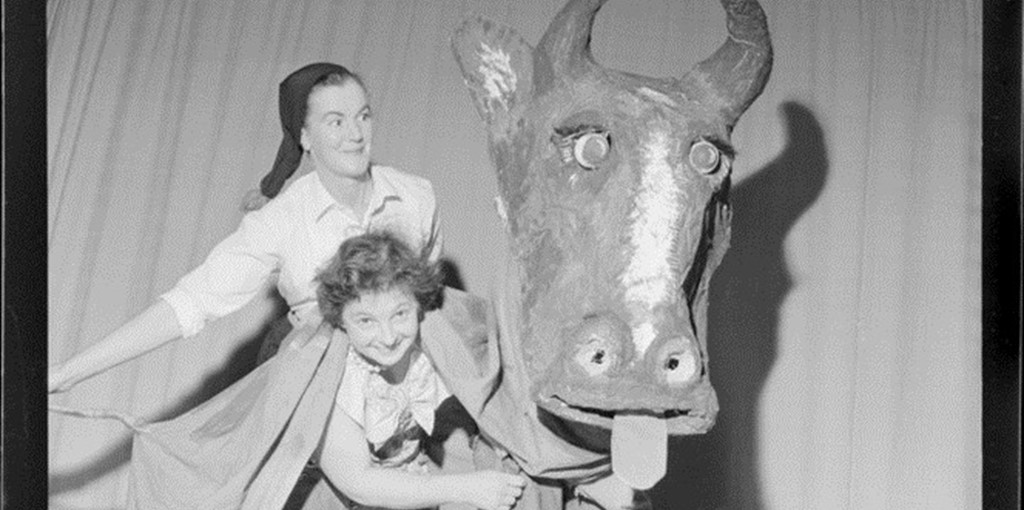Hutt Kindergarten Mother's Variety Show, with milkmaid and two women being legs for papier mache cow. Lower Hutt. Negatives of the Evening Post newspaper. Ref EP/1959/3813--F Alexander Turnball Library, Wellington, New Zealand
Prior to the first government subsidy in 1904 kindergartens were totally dependent on charitable funding if they were to remain free. Until the late 1940s kindergarten associations were still dependent on fundraising to cover basic costs.
Rallying behind kindergarten
In 1904 the Dunedin Free Kindergarten Association (DFKA) was operating three kindergartens. Raising the funds was a continual struggle. The view that the state ought to take some responsibility had grown. The association resisted the temptation to collect fees, although they instituted a system of parental donations and entered into many ingenious fundraising schemes. At the 1902 annual general meeting, the financial situation was so bad that two Members of Parliament in attendance suggested applying to the Government for a capitation grant. This was not a new idea, but the Association drew up a petition seeking a ‘grant-in-aid’, using the precedent of New South Wales, Australia. The application was unsuccessful despite a sympathetic hearing, so a second petition was presented in 1904. This time the Government granted its first assistance to free kindergartens – £500, to be shared among all free kindergartens in the country. In 1909 the DFKA negotiated an agreement that brought a capitation subsidy per pupil for every pound raised by the Association. By 1914, when there were associations operating in the four main cities, the Government contribution became a straight £2 per child subsidy each year. This brought some financial stability. For the kindergartens to survive and expand voluntary work and fund raising remained a considerable part of kindergarten work.
Source: May, Helen (2013, 2nd ed.) Discovery of Early Childhood,
NZCER Press, Wellington, pp. 181-2.
Prior to the first government subsidy in 1904 kindergartens were totally dependent on charitable funding if they were to remain free. Until the late 1940s kindergarten associations were still dependent on fundraising to cover basic costs. In the postwar era communities had to fundraise in support of getting a kindergarten established and there was continual fundraising to support the purchase of play equipment or projects. Weekly ‘voluntary donations’ from parents also provided a significant revenue source. From the 1990s kindergartens were allowed to charge a fee and many associations dropped the term ‘free’ their names. In 2007 the Government introduced 20 Hours ECE for all children over 3 years. This significantly improved the funding of kindergartens and a number of associations abandoned donations or fees to advertise free ECE.
From the start fundraising activities were varied. There are examples from grand concerts in the town hall, annual street day collections to the always popular, tricycle ride or cookery book. Showcasing the work of kindergarten through such activities was important part fundraising publicity. Fundraising became a community event often involving Mothers’ Clubs or Fathers' Clubs. Into the twenty-first century kindergartens were still fundraising but mainly for special projects such as landscaping or updating ICT equipment.

1955 Floral Carpet poster, AKA Archives, NZMS1275, George Grey Collections, Auckland Public Library


